The reception rooms of Palazzo Koch contain a number of antique tapestries. There are sixteen pieces in all, produced by various French and Flemish workshops, providing a substantial sample of European production in the 16th and 17th centuries. Eleven of the tapestries, which the Bank of Italy purchased in 1930, come from the prestigious Turin collection that the industrialist Renato Gualino built up with the help of the great art historian Lionello Venturi.
The two oldest tapestries, dated to the last quarter of the 16th century, depict Abraham and Melchizedek and David and Abigail. Although the absence of a signature or initial has made it impossible for the experts to identify the designers or weavers, the works are typical of late 16th-century Flemish production, known for greatly simplifying the contrasts between dark and light.
Of exceptional quality are the three tapestries illustrating episodes from the Stories of Diana, part of a famous series produced around 1625 by the workshops of the Grande Galerie du Louvre. The manufactory was set up by Henri IV and placed under the direction of the talented Flemish weavers Franz von Planken and Marc Coomans, who with great technical skill transposed the cartoons made by the court painter Toussaint Dubreuil. The cycle of Diana is based on Book VI of Ovid’s Metamorphoses and originally consisted of ten pieces. It was so successful that it was replicated several times during the 17th century and sets identical to the three owned by the Bank of Italy can be found in Paris, Madrid, Vienna and Edinburgh.
There are also six 18th-century French tapestries depicting Events in the Life of Alexander the Great, made by an unidentified provincial workshop and replicating the finer works produced by the Paris Gobelins manufactory. The Gobelins tapestries were based on the large-scale paintings executed by Charles Le Brun for Louis XIV, now on display in the Louvre. The episodes, which were produced as tapestries at least eight times by the royal workshops, were generally divided into three parts, making a total of eleven pieces.
Other noteworthy tapestries include the Gathering of Manna in the style of Rubens. It replicates, with only a few variations, one of the subjects of the famous series Triumph of the Eucharist, which the Archduchess Isabella Chiara Eugenia commissioned in 1628 from the Brussels workshop of Jan Raes and Jacob Geubels. The original, woven from sketches and cartoons by Pieter Paul Rubens, is now in the Convent of Las Descalzas Reales in Madrid.
Gli arazzi
The Tapestries

Works of art

Susanna and the Elders
The scene at the centre of the tapestry depicts the famous episode in which Susanna, wife of a wealthy Jew of Babylon, is the object of unwanted attention and blackmail by two elderly judges, as narrated in the Old Testament Book of Daniel.
Tapestry
18th century AD
Biblical - Historical - Mythologic
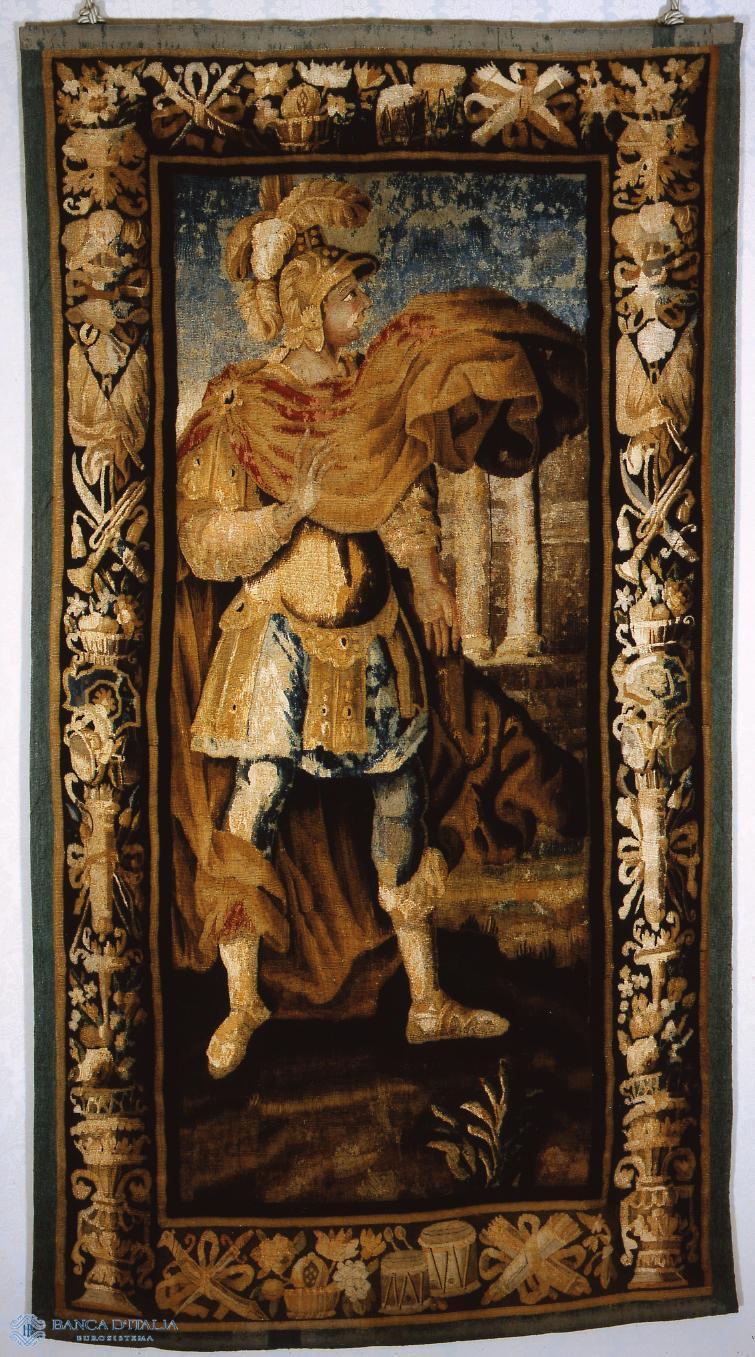
Macedonian Soldier
In an arid landscape evocative of the remote lands through which Alexander the Great’s army travelled, two marble columns rise behind the noble figure of a Macedonian foot soldier. The soldier is wearing armour, on his head is a plumed helmet and he is wrapped in a large cloak, pinned at the shoulder and billowing in the wind.
Tapestry
17th century AD
Biblical - Historical - Mythologic

King Porus before Alexander the Great
After conquering Persia, in the last years of his life Alexander decided to continue his victorious march towards the boundless lands in the East. As narrated by the ancient biographers Quintus Curtius and Plutarch, upon reaching the shores of the Hydaspes River in 326 BC Alexander encountered the troops of the king of the Punjab, Raja Parvatka or Paurava, known in Greek as King Porus.
Tapestry
17th century AD
Biblical - Historical - Mythologic
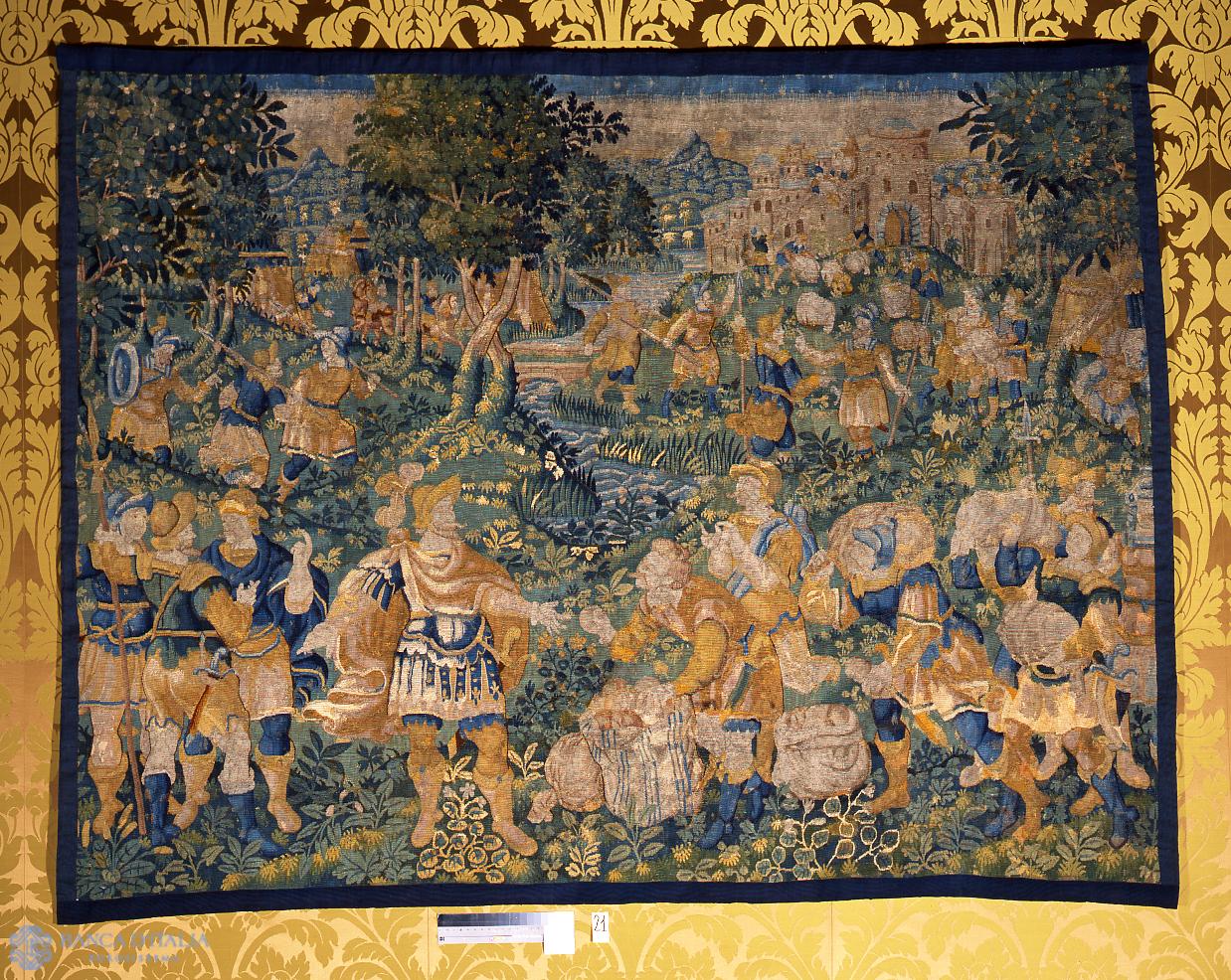
The Meeting of Abraham and Melchizedek
The tapestry, probably of Flemish manufacture and dating from the end of the sixteenth century, depicts the biblical story of the meeting between Abraham and Melchizedek narrated in Chapter 14 of the Book of Genesis.
Tapestry
16th century AD
Biblical - Historical - Mythologic

The Meeting of David and Abigail
The tapestry, woven in wool and silk, is of Flemish manufacture and dates from the end of the sixteenth century. It depicts the biblical story of the meeting of David and Abigail narrated in the First Book of Samuel.
Tapestry
16th century AD
Biblical - Historical - Mythologic
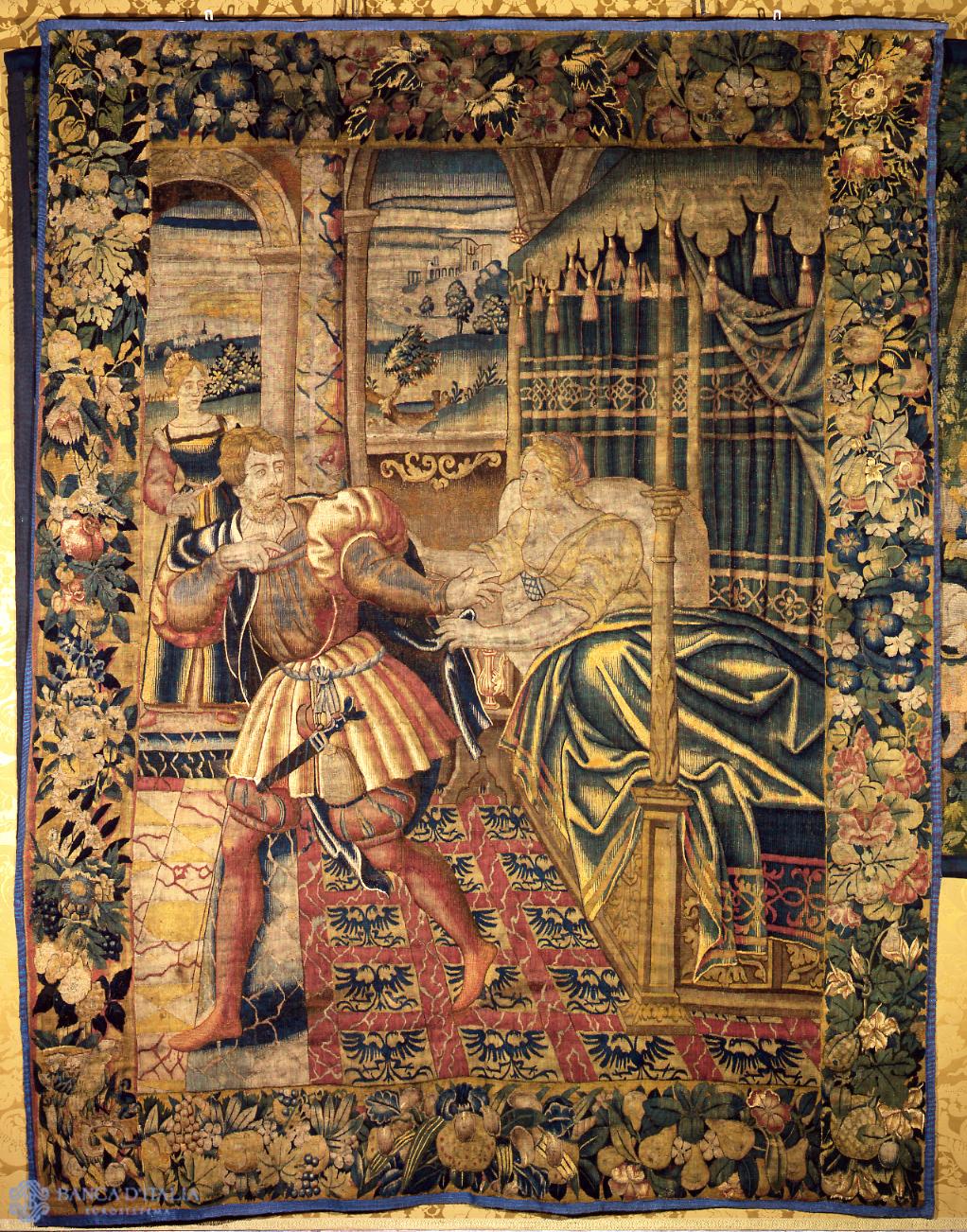
Joseph Tempted by Potiphar’s Wife
This is a liberal interpretation of one of twenty tapestries forming the famous cycle The Story of Joseph, based on cartoons by Agnolo Bronzino, Jacopo Pontormo and Francesco Salviati and woven between 1546 and 1553 by the Flemish weavers Jan Rost and Nicolas Karcher, who worked in the Florentine manufactory set up by Cosimo I de Medici (1519-1574).
Tapestry
17th century AD
Biblical - Historical - Mythologic

The Gathering of Manna
The stately composition creates the trompe l’oeil effect of a tapestry within a tapestry. The scene appears as if depicted on a wide panel hanging from an entablature supported by two spiral columns resembling the ones by Bernini in St. Peter’s.
Tapestry
17th century AD
Biblical - Historical - Mythologic

The Entry of Alexander into Babylon
Triumphant aboard a golden chariot drawn by elephants, sceptre in hand, his head circled with laurel, Alexander the Great makes his entry into the city of Babylon after repeatedly defeating the Persian army.
Tapestry
17th century AD
Biblical - Historical - Mythologic
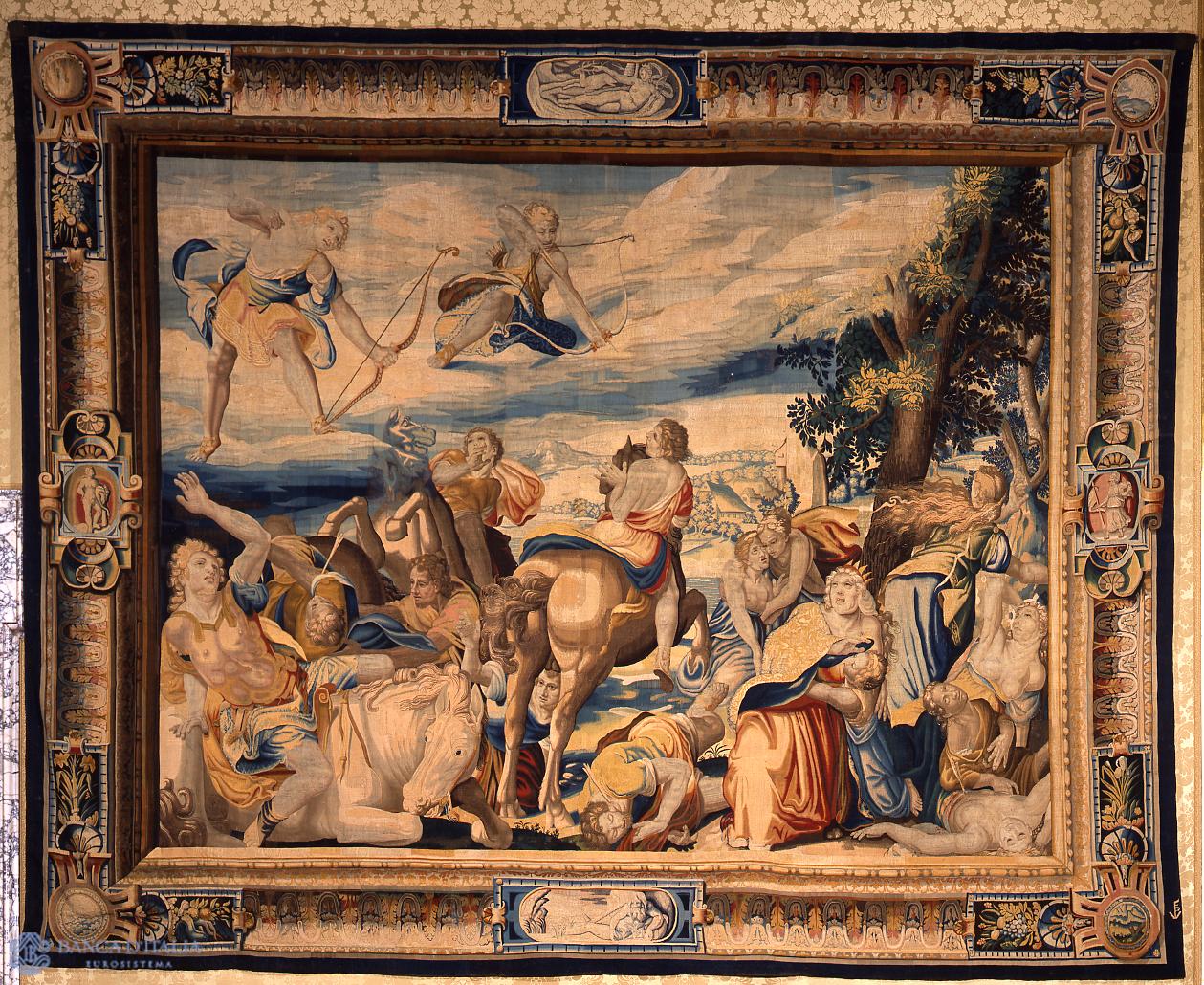
Diana and Apollo Slaying the Children of Niobe
In Metamorphoses Ovid narrates the tragic story of the children of Niobe, slain by Apollo and Diana because of their mother’s great pride. The two deities are depicted on high, riding on clouds, as they release their fatal arrows against the designated victims.
Tapestry
17th century AD
Biblical - Historical - Mythologic

Diana before Jupiter
This enormous tapestry, measuring six and a half metres, depicts Diana asking Jupiter for revenge against the sacrilegious Niobe or imploring for the gift of eternal virginity. Behind her a handmaiden holds back the greyhounds that were dear to the goddess of the hunt.
Tapestry
17th century AD
Biblical - Historical - Mythologic

The Triumph of Alexander the Great
A mighty Macedonian horseman, his sword held proudly in his right hand, sits straight on his fiery steed. In the background, the tents of a military camp can be seen, while on high a winged figure bearing trumpet and crown rests on the clouds.
Tapestry
17th century AD
Biblical - Historical - Mythologic

The Birth of Diana
In this episode from Ovid’s Metamorphoses Latona, holding on to the trunk of a palm tree and an olive branch, gives birth to Diana and Apollo. On the right, Latona appears again holding by hand her two children by Jupiter.
Tapestry
17th century AD
Biblical - Historical - Mythologic
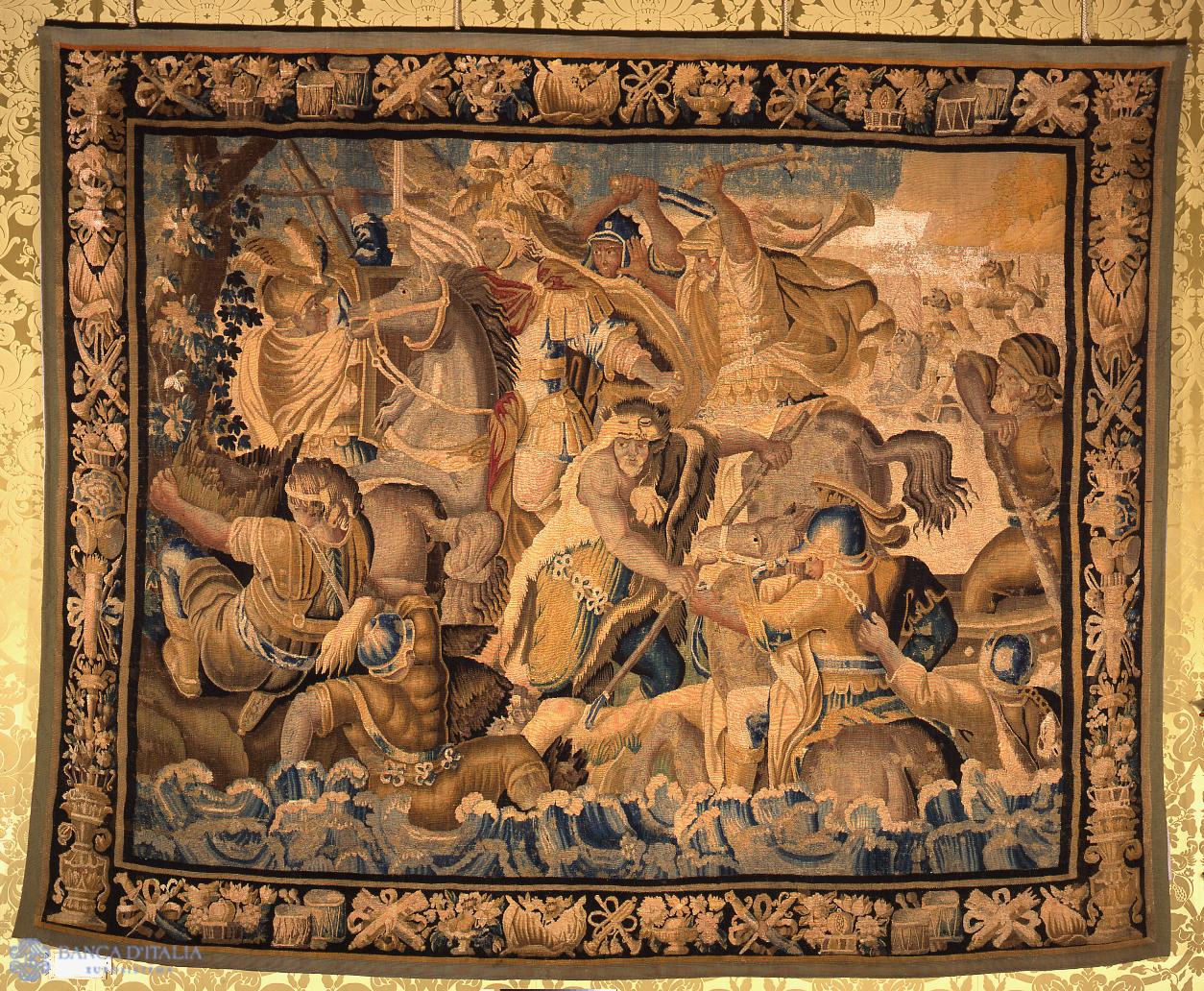
The Battle of Granicus
After landing in Asia Minor, in 334 BC Alexander met the troops of the Persian satraps on the banks of the Granicus River, not far from the Trojan Plain. His decisive victory there allowed him to conquer the whole of the Turkish peninsula and advance towards the lands in the East.
Tapestry
17th century AD
Biblical - Historical - Mythologic
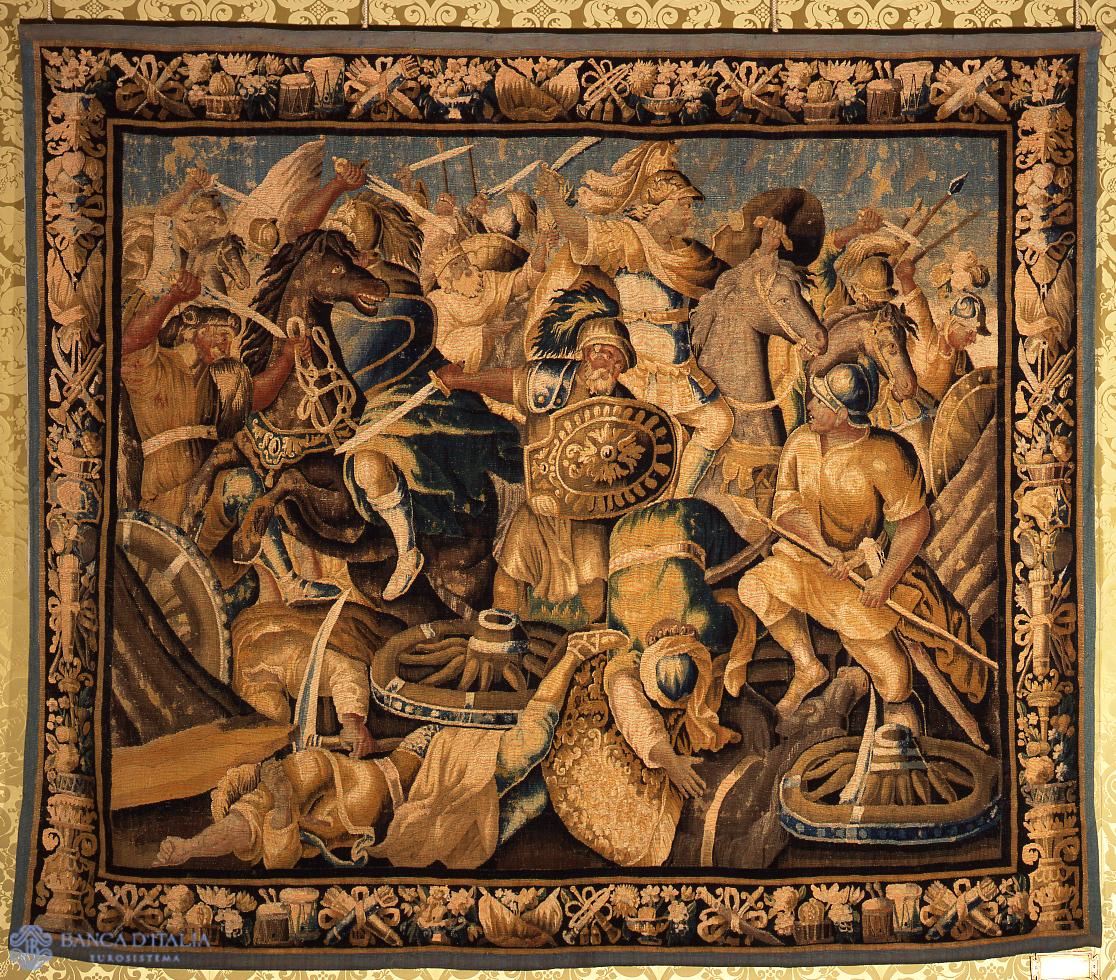
The Battle of Arbela
This is one of a six-piece set of tapestries narrating the story of Alexander the Great, probably woven between 1680 and 1690 in the town of Felletin, in France. It depicts the famous battle that took place in 331 BC between the Macedonian king and Darius III, usually known as the Battle of Arbela but which actually took place on the Plain of Gaugamela.
Tapestry
17th century AD
Biblical - Historical - Mythologic
